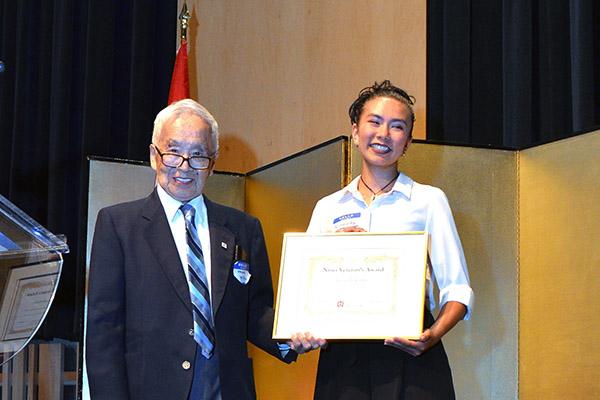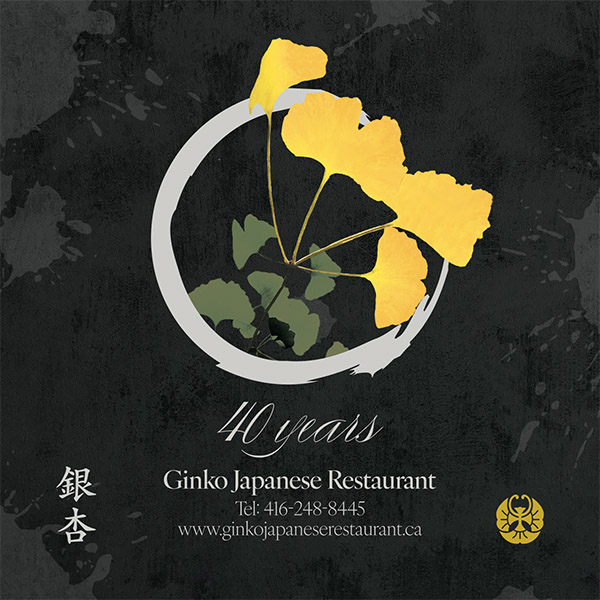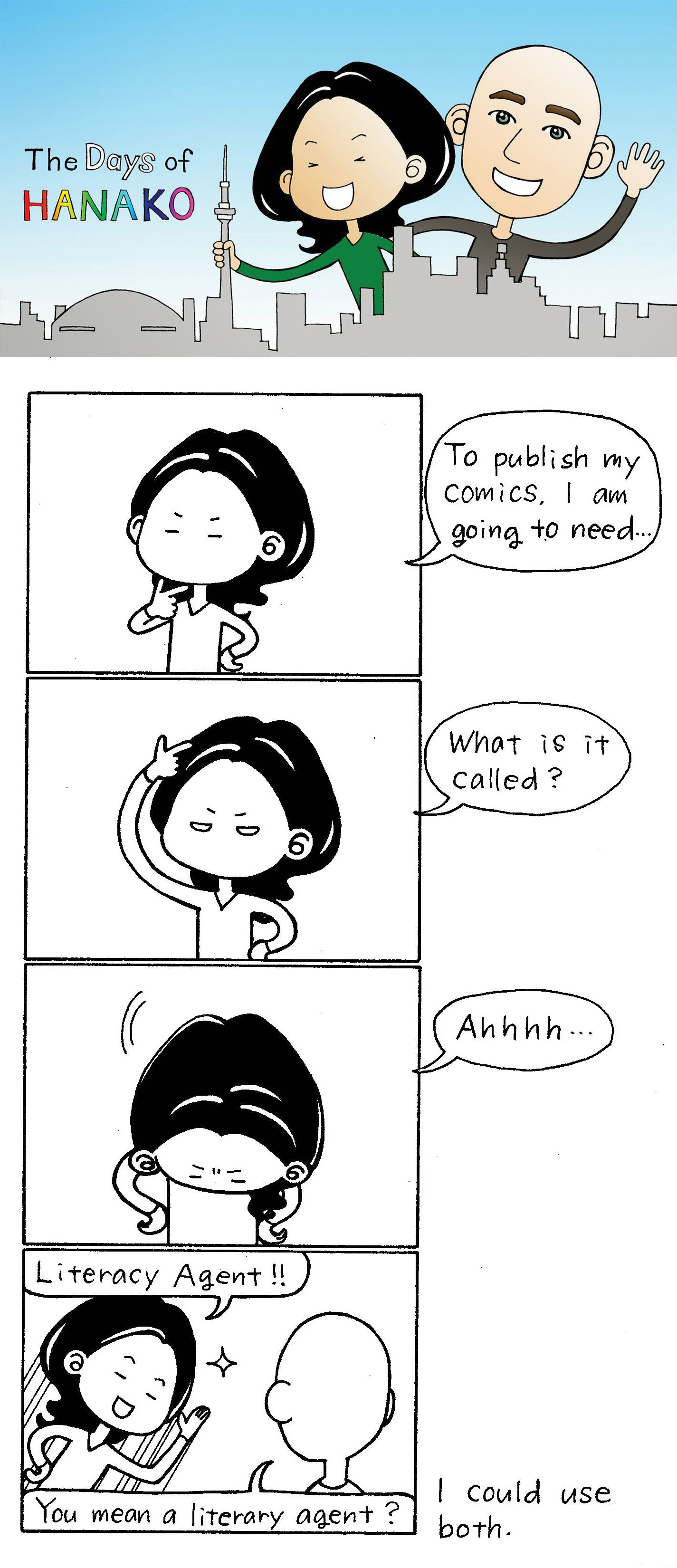Frank Moritsugu presenting the Nisei Veterans’ Award to Kennedy Liddle for her work in odori at Arigato Day at the Japanese Canadian Cultural Centre on Aug. 25. Photo credit: JCCC
TORONTO — This year’s Arigato Day, the special annual event to thank those who have selflessly supported Toronto’s Japanese Canadian Cultural Centre, was held on Aug. 25. It was an enjoyable day for the 250 or so people who attended.
Mind you, that view might be biased, because for recent years I’ve had a role at Arigato Day. This was the 13th year that the Nisei Veteran’s Award was included in the program. As one of the few surviving Second World War Canadian veterans, I have been MCing the presentation of the award for the past few years, which was contributed by fellow veteran Tom Nishio.
This year’s Arigato Day program items included bingo (Betty was one of the winners, while as usual I wasn’t). Then a JCCC trivia quiz, followed by an unexpected appearance by Princess Takamado of Japan, in an elegant yellow outfit—she gave a speech in perfect English.
Next was the tasty bento lunch by Mr. Ishii. Then JCCC president Gary Kawaguchi gave a greeting speech, followed by the introduction of the centre’s volunteer committee.
The Nisei Veterans’ Award followed, recognizing two young recipients. Which meant it was my turn to get up on the stage in the packed Kobayashi Hall. What follows is my introduction to the awards:
“Now the presentation of this year’s Nisei Veterans’ Award. It is a generous contribution to the Japanese Canadian Cultural Centre by Tom Nishio.”
Tom was present at the event, at a table near the stage with the award winners and their parents.
“As the official description of this unique award says, ‘The award came from a desire to remember and recognize the dedication and loyalty to Canada of Nisei veterans during the Second World War. The award recognizes young people in the JCCC’s martial arts and odori dance programs.’ Particularly those exceptional members who reflect the same beneficial spirit and values of the Canadian Nisei veterans, who enlisted when the ban was finally lifted in 1945. The recipients each year get an award certificate, plus one year’s class tuition in their particular martial arts or odori group, as well as a one-year JCCC membership.
“When our ages are considered, it is no surprise that there are not many surviving Nisei Second World War veterans left. Just as there is only one Vancouver Asahi player, Kaye Kaminishi, left. During the past year we have lost Ray Takeuchi, Roy Matsui and Mickey Nobuto. But we will never forget them or the others that preceded them. As it happens, Tom Nishio and I are in our 90s and still hanging on. Both of us are graduates of Kitsilano High School from our Vancouver years, before we were kicked out of the B.C. coastal area in 1942.
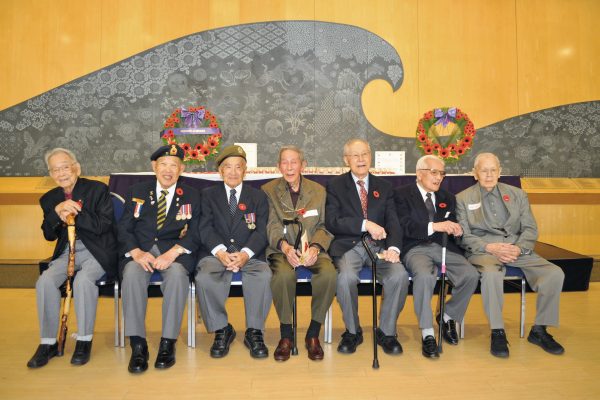
Nisei veterans at the JCCC Remembrance Day ceremony, November 2017. Photo credit: Kelly Fleck.
“Tom graduated in 1939, a year ahead of me and the late Min Yatabe. We were so proud that Tom, a fine athlete, had been captain of the high school’s rugby and football teams. At pep rallies, we noted that he was not only smaller than the other players but also the only non-white player, and also one of the team’s top players.
“By 1945, most of us had moved from B.C. to Ontario or Quebec. Then B.C.’s ban against Japanese Canadians or Chinese Canadians enlisting in Canadian military, from 1939, was lifted. We were among the 150 Nisei who joined up. We were allowed to volunteer for one military purpose: to become Japanese-language interpreter-translators attached to the British forces in Southeast Asia, to deal with Japanese prisoners of war.
“Now to this year’s two winners of the Nisei Veterans’ Award.
“First is Kennedy Liddle of the Sakura-Kai odori club. Here is why she was nominated for the award, according to Irene Seki of Sakura Kai: “Kennedy has been with the club for the past 10 years. Ever since she started as a child, she has shown great enthusiasm in performing for all the events. She also introduced this art form by dancing solo at her school. As a teenager, she is a great role model to our younger dancers, assisting with the teaching and helping with makeup during performances. Kennedy is always there to help.”
“Congratulations, Kennedy. Keep on loving odori and doing good for the JCCC.

Frank Moritsugu presenting the Nisei Veterans’ Award to Julien Couturier for his involvement in the JCCC’s Kendo Club at Arigato Day on Aug. 25. Photo courtesy: JCCC.
“The other award winner is Julien Couturier of the centre’s Kendo Club. Bryan Asa, the Kendo Club’s head instructor says in his nomination: Over two years ago, Julien directly told me that he would commit to practice diligently to improve his kendo. Since then, I have been impressed with Julien’s integrity and determination as he has diligently and regularly attended practices three times a week (even during severe snowstorms, to the amazement of other club members).
“This is reflected in his accomplishments in recent junior tournaments, placing first at the spring and fall Ontario junior tournaments in both the individual and team categories—the latter as captain. Tournament results are important, but the goal of kendo is the development of character. Last November, Julien—at the age of 14—received special permission to compete in a senior tournament (usually restricted to competitors at 17 years old and over). Julien played well, but ultimately lost.
“Despite his impressive accomplishments for a junior member, he wasn’t satisfied. He picked himself up and practiced further. For the senior tournament this past March, the club decided to reward his efforts by putting him on the JCCC A Team (the top team). The team took first place in the tournament—the first time in over five years for the JCCC’s Kendo Club. I’m a firm believer that the most effective way to motivate the members of a club is to show a positive future. Julien leads our small group of enthusiastic junior members and plays a significant role in demonstrating a bright future for our club.’
“Congratulations, Julien. Keep on developing your kendo skills and doing JCCC good.”
Then followed the final program item: Ontario Volunteer Service Awards. The winners were more than a dozen longtime JCCC volunteers. President Gary Kawaguchi presented a framed award certificate to each winner and took photos with each volunteer holding their certificate. As you would expect, the audience applause for each volunteer award winner was naturally most enthusiastic. As it had also been for the Nisei Veterans’ Award winners.
The conclusion to this column is the final part of my Nisei Veterans’ Award introduction that I took out due to the lack of time. It was a suggestion to the young persons present, as well as their parents, on how to get to learn the Nisei veterans’ story. How we were kicked out of our homes in B.C., but still became soldiers and served Canada, to show we were just as Canadian as everyone else, despite what racists said. Here it goes:
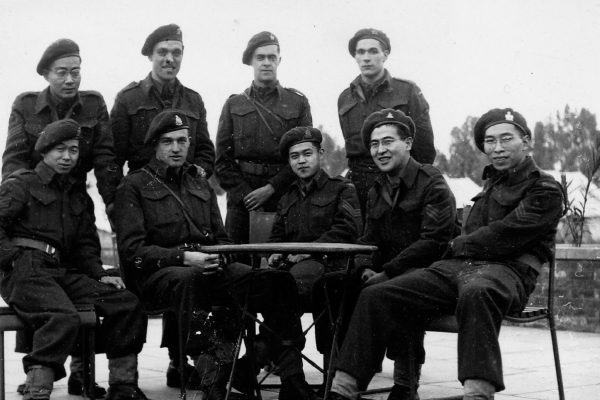
These soldiers were students of the S-20 Japanese Language school in West Vancouver, and they were part of a group that was deployed to Southeast Asia in October 1945 to work for SEATIC (Southeast Asia Translator Interrogator Centre). Top (Left to right): Sadao Nikaido, Ferdnand Leduc, Howard McDonald, Frank Haley. Bottom: Roy Ito, Bill Hunter, Tad Ode, Shig Oue, Eiji Yatabe. Roy Matsui, who is not in this photograph, was the sixth Nisei graduate. Photo courtesy: Yatabe Family Collection.
“For those of you who would like to know more about how Japanese Canadians fought for our country during the two world wars, the best source is Roy Ito’s book, We Went to War. Roy also served overseas in Southeast Asia and Hong Kong after the war’s end. Then in 1958, his book was published. Not only is Roy’s writing most readable, and the details fascinating, but his history also deals with the Japanese Issei men who fought for Canada in Europe during the First World War. They couldn’t enlist in B.C., so went to Alberta to do so.
Roy went through all sort of documents in the archives and letters written in Japanese that the Issei soldiers had sent to their families back in Canada. He lists that in the Great War, 182 Issei soldiers volunteered and served in the Canadian infantry in Europe. Fifty-four were killed, 116 were wounded and those returned not physically wounded were only 12.
Then the second part of We Went to War tells the story of us Nisei soldiers, serving in Southeast Asia. Naturally it includes Roy’s personal involvement at the Hong Kong war crimes trial of Japanese officers and Kanao Inouye. Inouye was Canadian-born and later called ‘Kamloops Kid.’ He had gone to Japan before the war and became a Japanese soldier guarding and mistreating Allied prisoners in Hong Kong.
Roy along with Fred Nogami were the two Canadian Army monitors who checked what the Japanese interpreters were saying to the prisoners during those trials. After their duties were done, Roy returned to Hamilton and after completing his McMaster University studies, became a schoolteacher and eventually a school principal in Hamilton. As well as a skilled historian.
By the way, the book also has many, many photos—both of the First and Second World War Japanese Canadian soldiers. Well worth whatever the price is now.”
***







 19 Sep 2019
19 Sep 2019
 Posted by Frank Moritsugu
Posted by Frank Moritsugu 